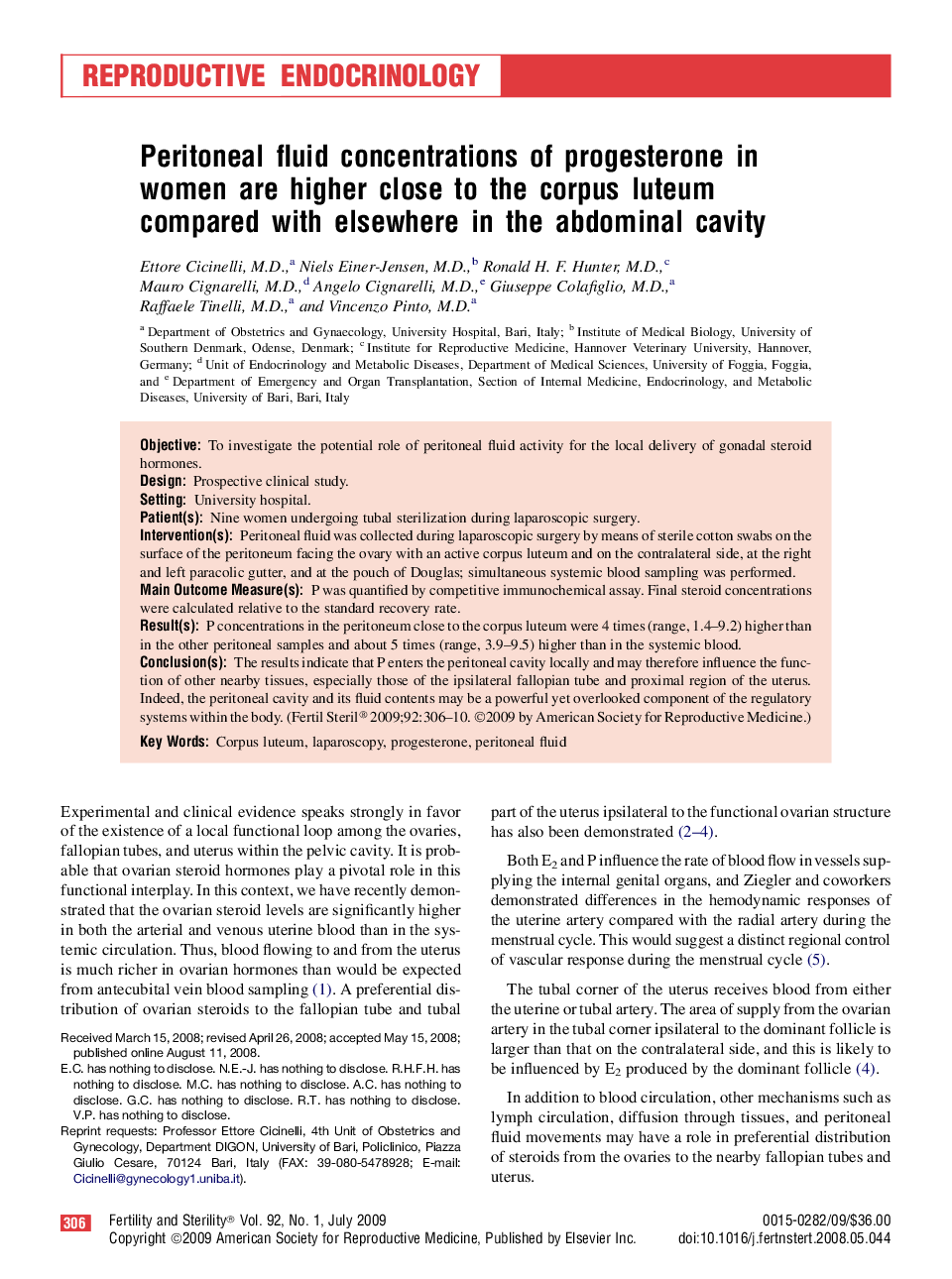| Article ID | Journal | Published Year | Pages | File Type |
|---|---|---|---|---|
| 3936878 | Fertility and Sterility | 2009 | 5 Pages |
ObjectiveTo investigate the potential role of peritoneal fluid activity for the local delivery of gonadal steroid hormones.DesignProspective clinical study.SettingUniversity hospital.Patient(s)Nine women undergoing tubal sterilization during laparoscopic surgery.Intervention(s)Peritoneal fluid was collected during laparoscopic surgery by means of sterile cotton swabs on the surface of the peritoneum facing the ovary with an active corpus luteum and on the contralateral side, at the right and left paracolic gutter, and at the pouch of Douglas; simultaneous systemic blood sampling was performed.Main Outcome Measure(s)P was quantified by competitive immunochemical assay. Final steroid concentrations were calculated relative to the standard recovery rate.Result(s)P concentrations in the peritoneum close to the corpus luteum were 4 times (range, 1.4–9.2) higher than in the other peritoneal samples and about 5 times (range, 3.9–9.5) higher than in the systemic blood.Conclusion(s)The results indicate that P enters the peritoneal cavity locally and may therefore influence the function of other nearby tissues, especially those of the ipsilateral fallopian tube and proximal region of the uterus. Indeed, the peritoneal cavity and its fluid contents may be a powerful yet overlooked component of the regulatory systems within the body.
